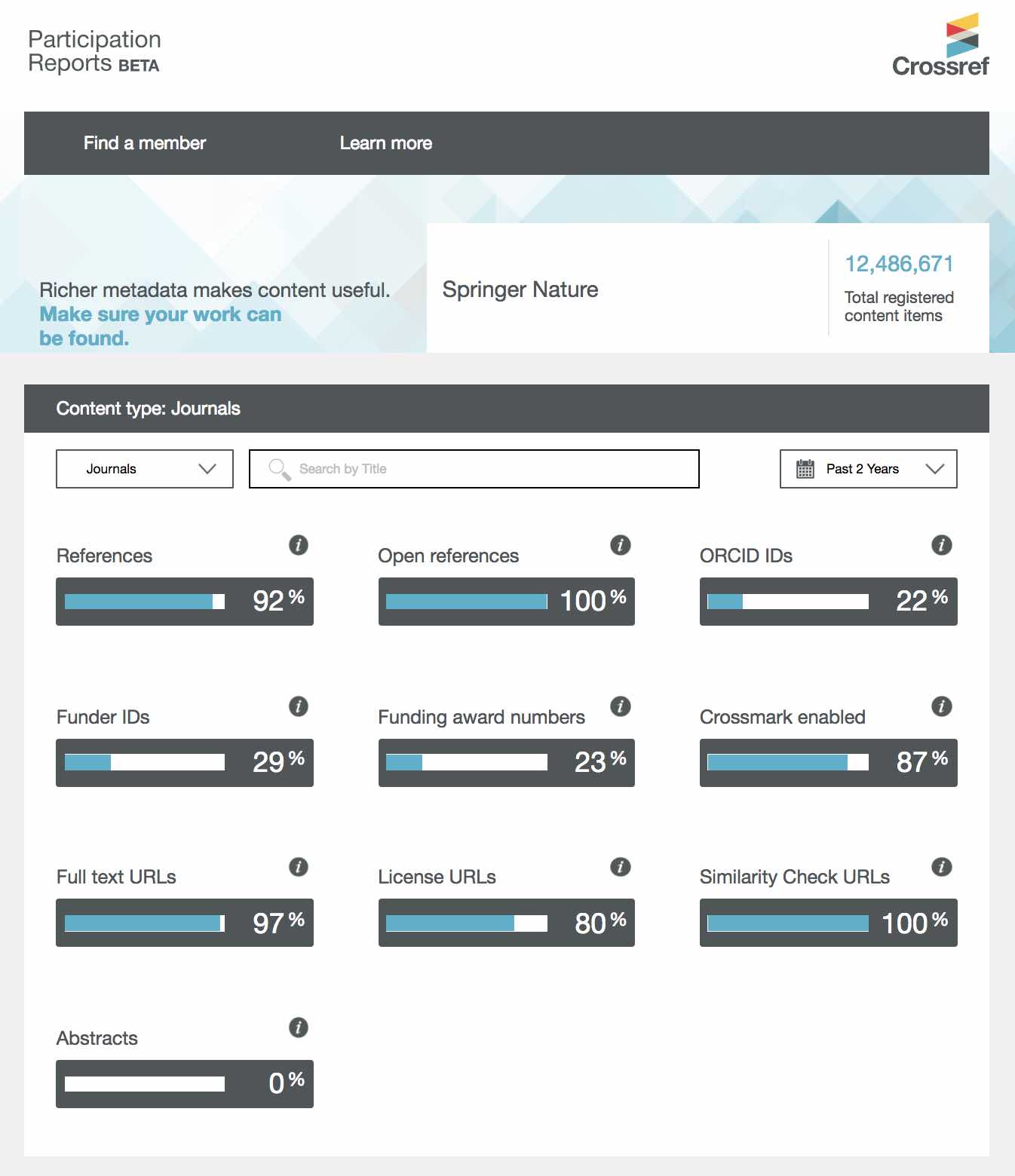Metadata is at the heart of all our services. With a growing range of members participating in our community—often compiling or depositing metadata on behalf of each other—the need to educate and express obligations and best practice has increased.
The last few months have been busy for the Crossref community outreach team. We’ve been out and about from Cape Town to Ulyanovsk—and many places in between—talking at ‘LIVE locals’ to members about all things metadata.
Hi, I’m Isaac. I’m new here. What better way to get to know me than through a blog post? Well, maybe a cocktail party, but this will have to do. In addition to giving you some details about myself in this post, I’ll be introducing our status page, too.

Continuing our blog series highlighting the uses of Crossref metadata, we talked to the team behind new search and discovery tool Dimensions: Daniel Hook, Digital Science CEO; Christian Herzog, ÜberResearch CEO; and Simon Porter, Director of Innovation.
Next in our Meet the members blog series is INASP, who isn’t a direct member, but acts as a Sponsor for hundreds of members.

The Crossref graph of the research enterprise is growing at an impressive rate of 2.5 million records a month - scholarly communications of all stripes and sizes. Preprints are one of the fastest growing types of content.
What do you think of when you think of Chicago? Deep dish pizza? Art Deco architecture? Well for one week only this year you can add scholarly publishing to the list as the #SSP2018 Conference comes to town.
From time to time we get questions from members asking what the difference is between reference linking and registering references as part the Content Registration process.

Exciting news! We are getting very close to the beta release of a new tool to publicly show metadata coverage. As members register their content with us they also add additional information which gives context for other members and for services that help e.g. discovery or analytics.
Crossref has decided to change the HTTP redirect code used by our DOIs from 303 back to the more commonly used 302. Our implementation of 303 redirects back in 2010 was based on recommended best practice for supporting linked data identifiers. Unfortunately, very few other parties have adopted this practice.
Continuing our blog series highlighting the uses of Crossref metadata, we talked to Gavin Reddick, Chief Analyst at Researchfish about the work they’re doing, and how they’re using our REST API as part of their workflow.